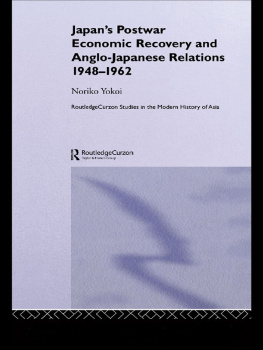First Published in 2000
by Routledge
2 Park Square, Milton Park, Abingdon, Oxon, OX14 4RN
270 Madison Ave, New York NY 10016
Transferred to Digital Printing 2008
Editorial Matter 2000 Eyal Ben-Ari and John Clammer
Typeset in Sabon by LaserScript Ltd, Mitcham, Surrey
All rights reserved. No part of this book may be reprinted or reproduced or utilised in any form or by any electronic, mechanical, or other means, now known or hereafter invented, including photocopying and recording, or in any information storage or retrieval system, without permission in writing from the publishers.
British Library Cataloguing in Publication Data
A catalogue record of this book is available from the British Library
Library of Congress Cataloguing in Publication Data
A catalogue record for this book has been requested
ISBN 0700712453
Publisher's Note
The publisher has gone to great lengths to ensure the quality of this reprint but points out that some imperfections in the original may be apparent
Chapter 1
Japan in Southeast Asia: An Introductory Essay
John Clammer and Eyal Ben-Ari
This volume is about the presence the impact, effect or influence of Japan in Southeast Asia, and more specifically, on the city state of Singapore, the primary and in many was paradigmatic case of the contemporary Japanese presence in the region. In Singapore the largest Japanese expatriate community is to be found, very visible socially, culturally, in business and in leisure not surprising, perhaps, given the concentrated impact that such a large group can have on a small and almost entirely urban society, one furthermore still struggling with the problems of its own identity and its relationship to the geopolitical sphere of which it is an integral part. But before focusing on Singapore, that society needs itself to be situated in the context of Southeast Asia and an exploration made of the broad forces of change which have shaped and are shaping the region as a whole.
Southeast Asia broadly defined as the ASEAN nations, Indochina and Burma along with an emerging south China, is booming economically and is fast developing into what is beginning to be termed the Pacific Century. The presence of Japan is felt in a diverse set of areas such as production and service facilities, financial and banking institutions, tourism and travel, departmental stores and supermarkets, restaurants and nightclubs, foods and clothing, comics and movies, and more intangible tastes, as in fashion and architecture. But is there an order or orders underlying these presences? How are these orders arranged and how are they changing? How are they related both to local and transnational social, political and economic circumstances? And how are we to theorize these emergent orders and their changes? This volume seeks to answer these kinds of questions, specifically in relation to Singapore, and through the Singapore case study, to the rest of a region which, despite its cultural diversity, has begun to experience very widely the issues of urbanization, rapid industrialization and the management of cultural identities in plural societies that Singapore has already faced within its own small geographical boundaries.
We justify our focus on our two entities and we do not assume the unitary nature either of Japan or Southeast Asia on the basis of two interrelated reasons, one empirical, one theoretical. Our contention is first that both area merit special attention because of their sheer economic (industrial and financial) importance. Secondly, we justify our focus for theoretical reasons. Asking about these two areas steers our social analyses of the present world from too strong a focus on things Western. We can instead ask about the intercultural patterns of influence between non-Western areas and about the now emergent and much debated notions of Asian-ness which are beginning to appear throughout the region in new guises and of which a primary source is Singapore and to some extent its immediate neighbour Malaysia, not least through the mechanisms of the former's Senior Minister Lee Kuan Yew and the latter's Prime Minister Mahatir Mohamad, who has even penned a book on the subject, revealingly with one of Japan's most prominent nationalists (Mahatir and Ishihara 1994. While much has been written about the contemporary circumstances in which Japan and the West (i.e. America and Europe) are present in each other's societies and cultures, we know relatively little about the mutual influences and effects between Japan and Southeast Asia. For example, scholarly studies of Japan and Western societies have been published with regard to such issues as mutual perceptions ((Iriye 1975) or literary portrayals and power relationships ((Miyoshi 1991). But little comparable work has been done on relationships between non-Western nations. Are for example Thai perceptions of modernization ((Yoshihara 1989) different from American ones? Or to take another example, Vishwanathan ((1992: 291), speaking about India's civilizational legacy, suggests that
Japan does not present itself as an opposite, different or exotic nation when viewed directly by Indians. At times, even the explanations of Western scholars about Japanese thought patterns and practices, which seem strikingly unique to them, seem to bring Japan closer to Indians rather than further distancing them from each other.
It is to raising these questions in relation to the mutual influences of Japan and Southeast Asia that this volume is devoted, by way of a detailed exploration of the single case of Singapore, the smallest nation in the region certainly, but precisely the one in which Japanese influence has been most keenly experienced.
In this introduction we provide a map, a tentative sketch, of the main issues involved in examining the broader picture, the context: the presence of Japan in Southeast Asia generally, and of the articles presented in this volume. We realize that inventories are always a problem. They change and must be continually amended. Nevertheless what we offer here is a preliminary catalogue of the problems and issues that we have identified, and we offer this introduction as a programmatic or polemical essay aimed at prodding us to rethink the current notions of Japan, Southeast Asia and of the nature of international flows of influence, peoples, materials and ideas of which Singapore lies at the geographical, economic and social epicentre.







